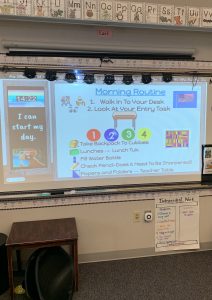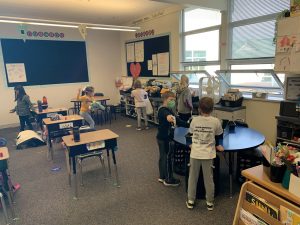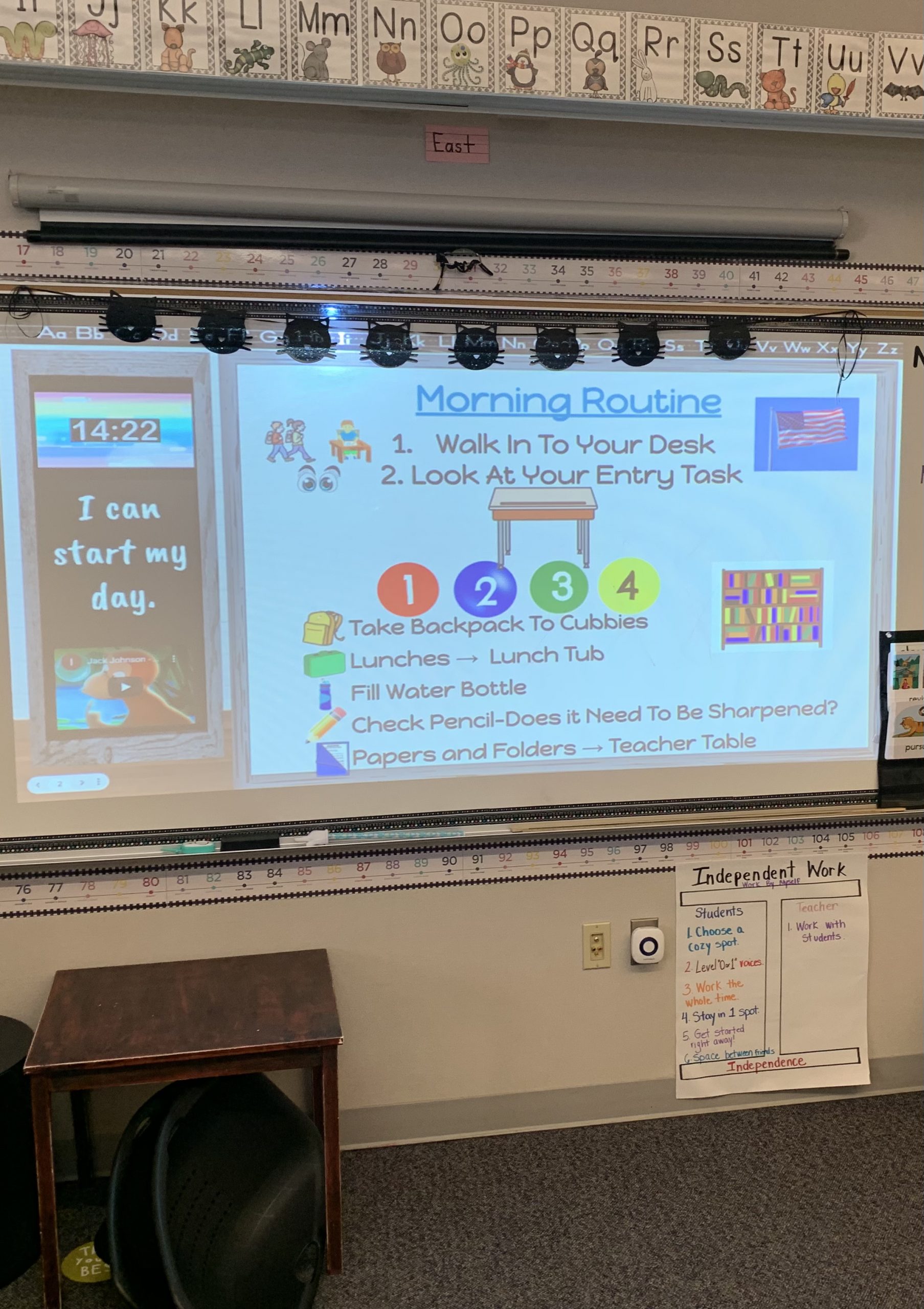Student Contributor: C. Klingler
 The soft start morning choice board is a google slide that is put up on the whiteboard each morning that includes the student’s jobs for the morning as well as soft start choices. Soft start is when students come in and have a slow beginning to their day where they are able to talk to the teacher, color, use play-doh, interact with their peers, and play with toys before starting the day academically. The soft-start is helpful because it starts students’ morning off on the right foot and allows the theater to have personal interactions with students that aren’t necessarily school-related to continue to build that relationship.
The soft start morning choice board is a google slide that is put up on the whiteboard each morning that includes the student’s jobs for the morning as well as soft start choices. Soft start is when students come in and have a slow beginning to their day where they are able to talk to the teacher, color, use play-doh, interact with their peers, and play with toys before starting the day academically. The soft-start is helpful because it starts students’ morning off on the right foot and allows the theater to have personal interactions with students that aren’t necessarily school-related to continue to build that relationship.
The soft-start morning choice board is put up each morning and is fairly consistent with what is on it and the choices available to students. Students are expected to come into the classroom and complete their jobs which are listed on the board including putting away lunches, coats, backpacks, and book shopping if it is their day. After students’ jobs are completed they are able to have their soft start choice which includes talking to peers, reading, coloring, play-doh, etc. Many students use this time to talk to the teacher and share personal things or create art for the teacher to hang in the classroom which creates that bond and relationship between teacher and student. The teacher also walks around during this time connecting with students and furthering their relationship. This tool allows students to come into the classroom and first focus on building relationships with these and their peers and then after about 15 minutes shifts the focus to academics. I have seen this tool used in a fifth-grade classroom as well as a first-grade classroom and it makes a great impact on the attitude of the day for and the attitude of students as well as how the rest of the day goes in both first and fifth graders.
 This tool falls under the preventative phase because it is something that is done at the beginning of each morning to meet students' needs and create a positive attitude for the rest of the school day. It creates a positive atmosphere and gets students in the right frame of mind to begin learning. It is considered preventative because it is done every day at the beginning of the day to start the day off on the right foot rather which prevents a negative start to the day and the need for redirection due to misbehavior. This tool could also be considered supportive because it is supporting students' needs for interaction with their peers and teacher before shifting straight to learning and academic conversations. This tool falls under the student-directed theory of influence with a hint of the collaborative theory of influence because it is focused on student needs at the beginning of the day and what is most beneficial for students to start the day off on the right foot. This tool also is centered towards student-directed because it is a way to create caring and personal relationships while giving students wide latitude and freedom for the first 15 minutes of school before moving towards a more constructed freedom.
This tool falls under the preventative phase because it is something that is done at the beginning of each morning to meet students' needs and create a positive attitude for the rest of the school day. It creates a positive atmosphere and gets students in the right frame of mind to begin learning. It is considered preventative because it is done every day at the beginning of the day to start the day off on the right foot rather which prevents a negative start to the day and the need for redirection due to misbehavior. This tool could also be considered supportive because it is supporting students' needs for interaction with their peers and teacher before shifting straight to learning and academic conversations. This tool falls under the student-directed theory of influence with a hint of the collaborative theory of influence because it is focused on student needs at the beginning of the day and what is most beneficial for students to start the day off on the right foot. This tool also is centered towards student-directed because it is a way to create caring and personal relationships while giving students wide latitude and freedom for the first 15 minutes of school before moving towards a more constructed freedom.
More Information –
Tool Source: Teacher at Adams Elementary


